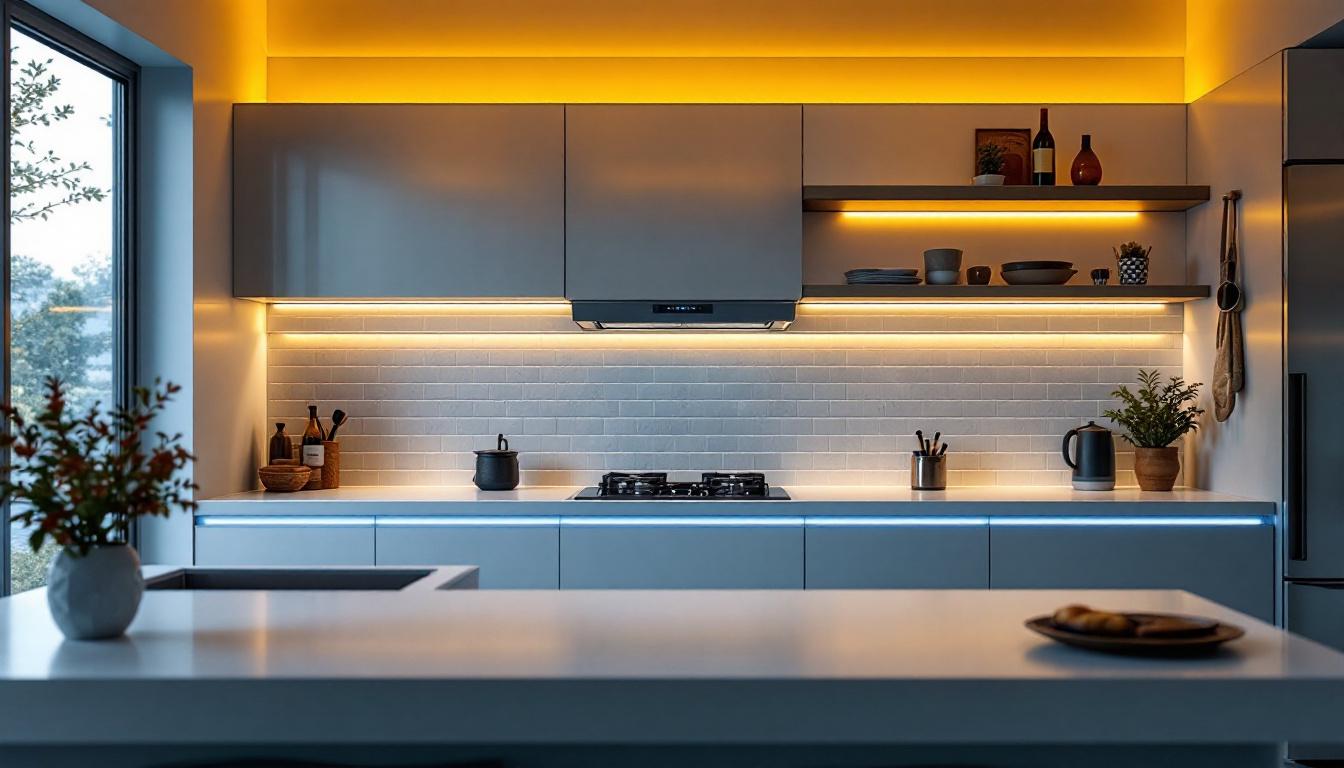
In the ever-evolving landscape of lighting solutions, solar panel lighting has emerged as a viable and sustainable option for contractors. With increasing environmental awareness and the demand for energy-efficient solutions, understanding the nuances of solar lighting systems is essential for any lighting contractor. This article delves into various strategies and considerations that contractors can adopt to leverage solar panel lighting effectively.
Solar panel lighting systems harness sunlight to generate electricity, which is then used to power LED lights. This technology not only reduces reliance on traditional power sources but also contributes to lower energy costs and a reduced carbon footprint. For contractors, this means an opportunity to offer clients innovative and eco-friendly lighting solutions. As more homeowners and businesses seek sustainable options, the demand for solar lighting is expected to rise, making it a lucrative area for contractors to explore.
A typical solar lighting system consists of several key components: solar panels, batteries, LED lights, and a controller. The solar panels convert sunlight into electricity, which is stored in batteries for use during the night or on cloudy days. The LED lights provide illumination, while the controller manages the system’s operations, ensuring optimal performance. Each component plays a vital role in the overall efficiency of the system, and understanding their interactions can help in designing more effective installations.
Understanding the function of each component is crucial for contractors. Proper installation and maintenance can significantly enhance the lifespan and efficiency of solar lighting systems. Familiarity with these components allows contractors to troubleshoot issues and provide better service to clients. Additionally, advancements in solar technology, such as improved battery storage solutions and more efficient solar panels, are continually evolving, providing contractors with new opportunities to upgrade existing systems and enhance their service offerings.
Solar lighting solutions come in various forms, each suited for different applications. Street lights, garden lights, and pathway lights are just a few examples. Street lights are typically designed for urban environments, offering high lumen output and durability. Garden lights, on the other hand, are often decorative and provide ambient lighting, enhancing the aesthetic appeal of outdoor spaces. These lights can be designed in various styles, from modern to vintage, allowing homeowners to express their personal taste while benefiting from sustainable energy.
Pathway lights serve a functional purpose, guiding pedestrians safely while also adding to the landscape’s beauty. By understanding the different types of solar lighting solutions available, contractors can tailor their offerings to meet specific client needs and preferences. Furthermore, solar lighting can also be integrated with smart technology, allowing for features such as motion sensors or remote control via smartphone apps. This integration not only enhances security but also improves energy efficiency, as lights can be programmed to turn on and off based on usage patterns, providing even greater value to clients seeking modern, smart solutions for their outdoor spaces.
Adopting solar panel lighting systems offers numerous benefits that can be highlighted to potential clients. These advantages not only promote sustainability but also enhance the overall value of the property.
One of the most compelling reasons to invest in solar lighting is the potential for significant cost savings. Once installed, solar lights require minimal maintenance and no electricity costs, resulting in lower operational expenses over time. For clients looking to reduce their energy bills, solar lighting presents an attractive solution.
Moreover, many regions offer incentives or rebates for solar installations, further decreasing the initial investment. Contractors can leverage these financial benefits when discussing options with clients, making solar lighting an appealing choice.
Solar lighting systems contribute to a greener planet by reducing carbon emissions associated with traditional energy sources. By utilizing renewable energy, clients can take pride in their environmentally conscious choices. This aspect is particularly appealing to clients who prioritize sustainability and wish to minimize their ecological footprint.
Contractors can emphasize the positive environmental impact of solar lighting during consultations, positioning themselves as advocates for sustainable practices in the lighting industry.
When designing solar lighting systems, several factors must be considered to ensure optimal performance and client satisfaction. Understanding these elements allows contractors to create customized solutions that meet specific needs.
A thorough site assessment is essential before installing solar lighting systems. Factors such as sunlight availability, shading from trees or buildings, and the intended use of the lighting must be evaluated. This assessment helps determine the appropriate type and number of solar lights required for effective illumination.
Contractors should also consider the geographical location and climate, as these factors can influence the efficiency of solar panels. By conducting a comprehensive site assessment, contractors can make informed decisions that lead to successful installations.
Understanding light output and distribution is crucial for achieving the desired illumination levels. Different applications require varying lumen outputs; for instance, street lights need higher lumens for safety, while garden lights may require softer illumination for ambiance.
Contractors must also consider how light is distributed. Utilizing fixtures that provide even light distribution can prevent dark spots and enhance visibility. Properly addressing these considerations ensures that clients receive effective and aesthetically pleasing lighting solutions.
Successful installation of solar lighting systems requires adherence to best practices. By following established guidelines, contractors can ensure that systems operate efficiently and meet client expectations.
Mounting solar panels and lights at the correct angle and height is vital for maximizing sunlight exposure. Solar panels should be positioned to capture the most sunlight throughout the day, typically facing south in the northern hemisphere. Additionally, lights should be installed at heights that provide adequate illumination without obstructing the light’s path.
Contractors should also ensure that all components are securely fastened and weatherproofed to withstand environmental conditions. Proper installation not only enhances performance but also extends the lifespan of the system.
While solar lighting systems require less maintenance than traditional systems, regular checks are still essential. Contractors should advise clients on the importance of keeping solar panels clean and free from debris to ensure optimal performance. Periodic inspections can help identify any issues before they escalate, ensuring the system operates efficiently.
Additionally, monitoring the system’s performance can provide valuable insights into its effectiveness. Contractors can offer maintenance services or provide clients with guidelines for self-monitoring, enhancing the overall customer experience.
Despite the numerous benefits of solar panel lighting, several challenges can arise during installation and operation. Understanding these challenges enables contractors to address them proactively and provide effective solutions.
Solar lighting systems are inherently dependent on weather conditions. Extended periods of cloud cover or inclement weather can reduce the efficiency of solar panels, leading to diminished light output. Contractors should educate clients about the potential impact of weather on system performance and discuss strategies for mitigating these effects.
For instance, recommending systems with larger battery capacities can help ensure that lights remain operational even during periods of low sunlight. By setting realistic expectations, contractors can foster client satisfaction and trust.
The initial investment for solar lighting systems can be a barrier for some clients. While long-term savings are significant, the upfront costs may deter potential customers. Contractors can help alleviate these concerns by highlighting the financial incentives available for solar installations and providing financing options.
Additionally, showcasing successful case studies and testimonials can reinforce the value of investing in solar lighting solutions. By addressing cost concerns directly, contractors can build confidence in their offerings.
The solar lighting industry is continually evolving, with new technologies and trends emerging regularly. Staying informed about these developments is crucial for contractors looking to remain competitive in the market.
Advancements in technology have led to the rise of smart solar lighting systems. These systems incorporate sensors and connectivity features that allow for remote monitoring and control. Clients can adjust settings, track energy usage, and receive alerts for maintenance needs through mobile applications.
Contractors who embrace smart technology can offer clients enhanced functionality and convenience. By integrating smart features into solar lighting solutions, contractors can differentiate themselves in a crowded market and appeal to tech-savvy customers.
As the demand for renewable energy solutions grows, integrating solar lighting systems with other renewable technologies, such as wind or geothermal energy, is becoming increasingly popular. This hybrid approach can enhance energy efficiency and provide clients with a comprehensive sustainability solution.
Contractors who explore these integration opportunities can position themselves as leaders in the renewable energy space, attracting environmentally conscious clients who seek holistic solutions.
Solar panel lighting presents a wealth of opportunities for lighting contractors. By understanding the components, benefits, design considerations, and challenges associated with solar lighting systems, contractors can offer clients innovative and sustainable solutions. Embracing new technologies and trends will further enhance their offerings, ensuring they remain competitive in a rapidly changing market.
Ultimately, the shift towards solar lighting is not just a trend; it is a movement towards a more sustainable future. By adopting smart approaches and prioritizing client education, contractors can play a pivotal role in this transformation, paving the way for a brighter, greener tomorrow.
Ready to harness the power of solar panel lighting for your next project? At LumenWholesale, we provide lighting contractors with the highest quality, spec-grade solar lighting products at unbeatable wholesale prices. Say goodbye to local distributor markups and hello to superior lighting solutions that meet the highest industry standards. With our hassle-free bulk buying and free shipping, you can equip your projects with premium, cost-effective lighting effortlessly. Elevate your lighting game and give your clients the sustainable brilliance they deserve. Discover the perfect fusion of quality, value, and convenience at Wholesale Lighting at the Best Value.

Discover cost-effective strategies and expert tips for lighting contractors to enhance their projects without breaking the bank.

Discover the essential considerations for lighting contractors when installing strip LED lighting in kitchens.

Discover the secrets to maximizing LED bulb longevity and avoid costly pitfalls in your lighting projects.

Discover the transformative power of halide lamps in lighting installation projects.